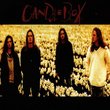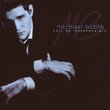| All Artists: Gustav Mahler, Michael Tilson Thomas, San Francisco Symphony Title: Mahler: Symphony No. 5 [Hybrid SACD] Members Wishing: 1 Total Copies: 0 Label: San Francisco Sym Original Release Date: 1/1/2006 Re-Release Date: 10/10/2006 Album Type: Hybrid SACD - DSD Genre: Classical Style: Symphonies Number of Discs: 1 SwapaCD Credits: 1 UPC: 821936001226 |
Search - Gustav Mahler, Michael Tilson Thomas, San Francisco Symphony :: Mahler: Symphony No. 5 [Hybrid SACD]
![Mahler: Symphony No. 5 [Hybrid SACD]](https://nationalbookswap.com/cd//l/17/5017/6145017.jpg) | Gustav Mahler, Michael Tilson Thomas, San Francisco Symphony Mahler: Symphony No. 5 [Hybrid SACD] Genre: Classical
Although in a letter to his wife Mahler expressed doubts about what the public would make of his Fifth Symphony, it has become one of his most popular works. As always, he kept revising it for several years; the final vers... more » |
Larger Image |
CD DetailsSynopsis
Amazon.com Although in a letter to his wife Mahler expressed doubts about what the public would make of his Fifth Symphony, it has become one of his most popular works. As always, he kept revising it for several years; the final version, heard here, was not published until 1964. Cast in five movements, it opens with a heavy, achingly mournful Funeral March, heralded by a recurring trumpet signal. The next movement, though thematically related, is its opposite: fast, "stormy," grotesque, calling for "utmost vehemence." The Symphony's center of gravity is the third and longest movement, an unusually weighty Scherzo. Driving and rambunctious, with a tenderly lyrical Trio, it stomps, dances and swings. In complete contrast to the preceding violence and massive orchestration, the famous Adagietto is the Symphony's shortest but most profoundly affecting movement. Scored only for strings and harp, it feels like an oasis of sonic and emotional calm. The Finale brings another surprise: humorous, gracious, playful, it recalls previously heard material (as well as some of Mahler's songs) and ends in a burst of laughter. Recorded live, this performance has great vitality, freedom, and color - even the enharmonic shifts are enhanced by making the flat keys dark and the sharp keys bright. However, it suffers from a few excesses: the tempo changes are good but too frequent and there is a lot of push-and-pull. The pianissimos are barely audible, the fortissimos ear-splitting; the texture gets muddy in the loud sections. The Adagietto is inordinately slow and falls apart with big ritards and long pauses. However, the playing is exciting and expressive, and the soloists are wonderful. --Edith Eisler Similarly Requested CDs
|
CD ReviewsActually, the sound is exceptional and the performance near Jonathan Angel | San Francisco area | 10/19/2006 (5 out of 5 stars) "This situation begs for an alternative review. The first review here characterizes Michael Tilson Thomas' recording of Mahler's 5th as a " tepid run-through by an uninvolved conductor and a bored orchestra," yet he also criticizes the performance for excessive rubato and other micromanagement. Well, you can't have it both ways. This is like criticizing a car for driving blandly, like a Toyota Camry, and at the same time darting all over the road like a 20-year-old Porsche. Whether rubato and fetishes about various detail are excessive or not is a matter of opinion (see later), but it's a fact that a conductor can't pull them off by being "uninvolved." Like my predecessor, I'll "start with the engineering." Among other considerations, the San Francisco Symphony has commendably used Super Audio CD (SACD) encoding for its entire Mahler cycle. (This is despite the naysayers who dismiss SACD as an irrelevant commercial failure.) That they did so is symptomatic of the general commitment to audio quality in all these recordings. I am a former recording engineer, and listened to this disc using a SACD player, whose output was fed to high-end stereo separates and studio monitor speakers. I also listened to the standard CD layer, ripped to an iPod Nano. Worst-case, i.e. on the Nano in stereo, the recording was almost as good as its best competitors. (I guess I should have said, there are many other great recordings of Mahler's 5th symphony.) Best-case is SACD, where like others of its ilk this disc provides audio quality that is riveting. Handled with care, SACD comes closer to live music or a master tape, and the difference is not subtle. Here, there is depth, excellent orchestral balance, and an immersive sense of acoustical space. (And to any critical music lover who says SACD is too costly to bother with, decent players -- which also play DVDs -- are easily available for $200 or less.) Now to the music. In the overall framework of a negative review, my predecessor actually cites many exceptional qualities of this performance, and there I agree with him. Tilson-Thomas is steeped in Mahler and as for the orchestra's response, they do what he wants on nearly a Chicago Symphony level. (They can't match the Berlin Philharmonic's virtuosity, but then what other orchestra possibly could except God's own?) As a Bay Area native who rarely attends SFSO concerts, I was prepared to dismiss the orchestra's contribution as second-rate, and I was late to jump onto the Tilson-Thomas Mahler bandwagon. But when I did, his recordings confounded my prejudices -- and this one is no exception. A conductor whose name is practically synonymous with Mahler -- especially the 5th -- is Leonard Bernstein. Lenny is a conductor you have to hear, but personally I prefer a more literal approach, without infuriating agogic distortions. Let Mahler make his own points, don't bother with special pleading. Examples of more straightforward Mahler 5ths would be the (wonderful) recordings by Simon Rattle and Claudio Abbado. Yet returning to Tilson-Thomas' disc after these reveals him to be "Bernstein lite," a conductor whose flexibility is noticeable but never annoying, always true to the score. Even in the famous Adagietto, which to my mind needs a clear-eyed "innocent" approach, MTT pulls it off. As a Mahler fanatic, I would hate to live without 5ths by Abbado, Bruno Walter, and perhaps others. Bernstein's Vienna Philharmonic 5th is also one I wouldn't be without. When you're talking about music on this level, no one performance can be "best." To my mind, MTT's 5th will delight both those who are new to this music and those who know it well. There's a sense of occasion and electricity about this 5th; in fact, I instinctively feel that it will still be remembered in 50 years, long after most others have been forgotten The only demerit on this disc is the SACD price. To me, the audio quality is worth it, but this very same recording is available on iTunes for just $10." MTT, SFSO, Mahler 5: Big, Songful, Hearty, Operatic Dan Fee | Berkeley, CA USA | 11/10/2006 (5 out of 5 stars) "My first conscious exposure to the possibility that Mahler could be played as opera was probably the stereo era recording of the 2nd symphony, committed to disc by Stokowski leading the LSO. From first note to last the whole grand thing simply rang out - clarion. Bel canto. I recalled that Stokowski revelation while listening to this MTT reading of the Mahler Fifth. Some touchstones for recorded comparisons: I have long treasured Mahler 5th Symphonies by the likes of: (1) Wyn Morris (Symphonica of London), (2) Rudolf Barshai (Neue Junge Deutsche Philharmonie-coupled with an equally stunning Tenth Symphony), (3) Sir John Barbirolli (New Phlharmonia), (4) Herbert von Karajan (BerlinPO), (5) Pierre Boulez (ViennaPO - another welcome surprise), (6) Michael Gielen (SWRSO), (7) Gary Bertini (CologneRSO), (8) Lorin Maazel (ViennaPO), and (9) Giuseppe Sinopoli (Philharmonia). Yes, some famous and some newer names are missing so far from my open-ended fav list. I just haven't warmed to these yet. If I have even heard some of them. Among the prior recordings, the MTT reading comes nearest - though not all that near in the end - to the Sinopoli reading. Both charmed and surprised me by treating this often gnarly-seeming symphony as Bel Canto Song. The greatest contrast is with Barshai, Gielen, and Bertini who in different ways engage more severely with the immense (in all senses of the word) polyphony of this work. Having such a viable range of interpretations is fascinating in itself, but efforts to find new things in a familiar piece of music can be failures, irritating, unconvincing on repeated plays. Not so this MTT Mahler Fifth. It seems to be getting faint praise from many listeners. Not so from me. The first trumpet notes put a hearer on notice that this will all be Bel Canto. Yes Lucia goes mad in the last act, kills her politically-driven husband, and Enrico knifes himself after a glorious farewell aria upon hearing that Lucia is dead as the cortege bears her tragically young body forth into the countryside of Scotland by way of Italy. But nothing ceases to be lyrical just because it is dramatic, or even melodramatic. Many great moments of symphonic polyphony achieve such flowing and flexible ensemble that, again, one tends to forget JS Bach, thinking of all the great opera trios, quartets, and quintets. There is nothing in MTT"s performance that is not still genuine Mahler, and yet Bellini and Donizetti stand applauding as it were, vigorously in the wings. The third movement made famous by Visconti's film use of it is essentially song, too. The breathing phrases, glinted and inflected with rubato, reminds us of those vulnerable dimensions of real human hearts, instead of being inflated as large (or as dramatically) as possible. The old saw about Clemens Krauss' approach to conducting Richard Strauss (Epic but bloated) has no place here. The Finale is our emergence back into the kaleidoscopic bright sunshine and bustle of the wide world. It shows quite a definite sense of humor. SACD booklet annotator Michael Steinberg puts the well-being of the Finale in context, opining that Mahler is willing to end this symphony with what he terms, a shout of laughter. By the end, I am willing to agree that this symphony is bursting with more sunshine and affirmation of life than I have typically wanted to hear in my fav versions. I am not exactly willing to throw all the other, darker readings out, but I can welcome this more positive view, too. Let me wrap up by discussing sound. I have heard this performance in superaudio surround sound. My system seems decent enough, with a Sony SACD player pushing signal out to five Definitive Tech floor speakers, through a B&K preamp and Bryston power amps. That is, I think I have had a decent chance to evaluate the audio without my system unduly getting in the way. If you have been attending live concerts lately in the re-balanced acoustics of Davies Hall in SF, you will surely recognize the truth of the recording the moment you hear it in all channels. So far as I can tell, the engineers have used a minimalist mike set-up in all the MTT Mahler recordings to date. They set the rig and let it go. No spotlight miking. No artificial editing to re-balance instrumental sections or solos. What you hear is consistent right through the performance, despite a series of live concerts being edited together to comprise the SACD master. The dynamic range is typically greater than ordinary 16-bit CD. Loud to soft simply expands in dimension via SACD, with tangible gains in full frequency clarity, warmth, and resonating air around the music that mostly tends to enhance tonal depth while locating sound even more vividly in the recorded venue. I can indeed think of SACD's which I hear as falling off the charts on the pppppp ends of the spectrum - Rostropovich's Shostakovich Eleventh with the LSO in SACD, and Zander's nearly sonically invisible posthorn soloist in his reading of the Mahler Third, do come to mind. But this MTT outing is not marred by this sort of SACD engineering failure. If you want the contrasting approach to this symphony that emphasizes polyphony and counterpoint textures, with plenty of fire and urgent impetus, you could hardly do better than the Rudolf Barshai 2-disc set on Brilliance, with that conductor leading the astounding Junge Deutsch Philharmonie in Barshai's completion of the Tenth Symphony, too. But in its own ways, according to its own sung sense, this MTT+SFSO approach breathes and dances and exemplifies a high level of operatic ensemble; if the Fifth has heretofore sounded a bit too lugubrious or dark to you, this may become one of your favs. Otherwise, like a live concert reading of the Bruckner Fifth wherein Blomstedt and SFSO shed entirely Schubertian light on that gnarly score, this performance is content to stake out its own interpretive territory." Pouring oil on the waves ... Pater Ecstaticus | Norway | 11/04/2006 (3 out of 5 stars) "The Michael Tilson Thomas Mahler cycle with the San Fransisco Symphony Orchestra is now nearing completion with a generally satisfying reading of the Fifth Symphony. The whole cycle will in a whole and on itself make a nice little stack of colorful, nicely polished, technically outstanding performances. Most of the time the playing is distinctive, with smooth ensemble playing, sometimes 'rising above the notes' in wonderful performances. Up to now, I find the First, Sixth and Seventh stand out as especially excellent.
But however gorgeous the sound and however beautifully polished and refined the ensemble playing, I find that these performances sometimes gloss over too much, or better: do not evoke enough, the anxiety and raw emotion - the sense of 'heart and nerves laid bare'. This is especially the case here, I think, with this recording of the Fifth Symphony, where as a result of going for a beautiful sound and for smooth ensemble playing, I think maybe too much oil is poured on the waves ... Especially in Mahler's Fifth, the conductor should stress the outrageousness of this music, where different voices in the orchestra are constanly vying (as in: shouting, crying, pleading ...) for attention, almost independently from each other sometimes. The Adagietto, when we have finally arrived there, doesn't at all feel like the logically and emotionally needed (contrastingly different) 'arrival after much turmoil'. And above this, the orchestral playing as such leaves me quite cold here also, which is a shame. Although I must say that it does sound very tender here, so I am cast to doubt again ... (And appreciation of the Adagietto does't have anything to do with the tempo, because in one of my favorite recordings of the symphony, namely the one by Benjamin Zander on Telarc, the same piece is quite a bit (more than 2 minutes) faster [8:33], but it does make the heart strings of this particular listener resonate.) Also, the Part II Scherzo isn't as dizzyingly mesmerizing as should be, I believe. Maybe also because it is played a bit slowly here (taking up more than 19 minutes) and without much tension, too relaxed (like the whole of Part I as well, actually), after which the emotionally dry Adagietto almost feels a bit gratuitous, I am sorry to say (because it is quite a pity). This performance misses out something on the 'soul' of this music. At no point does this recording really 'lift off' and come alive as many other recordings of this symphony (or, for that matter, as other recordings in this cycle), like (among others) the ones by Bruno Walter and the New York Philharmonic (1947), Benjamin Zander and the Philharmonia Orchestra (2000) and Bernard Haitink's zestful live-recording with the Concertgebouw Orchestra (Eurovision Christmas Matinee concert, 1986). I believe that this recording does fit in nicely with the rest of the Tilson Thomas/San Francisco Mahler cycle and as such it is a safe buy for collectors (of which I am certainly one). But on itself it is not at all a prime recommendation for this recording, however gorgeous the orchestral playing and the recording as such. (Be warned though, that there is a little glitch/wobble in the sound of the stereo-layer of this CD at [5:03] during the 5th movement - a pity and a shame, especially for this kind of money). For that it just sounds too uninvolved emotionally, lacking tragedy, tension and drama. Maybe the conductor is on an altogether different plane of thought here, like in his recording of Mahler's Ninth Symphony, which - notwithstanding the music's heavy connotations of leave-taking - breathes a same kind of 'emotional detachment' as this recording of the Fifth. This may be a result of some unique vision, I don't know, but I'm afraid I do not really follow here - at least, not for the moment. Anyway, this recording does take a bit to get used to (and maybe a whole different mind-set), compared with what I am used to and with what I love and have come to expect with this music. But maybe I'll start to like it more and more during years to come, when a recording, so to say, 'grows on you', which can indeed happen sometimes. So for the moment I can only listen and learn (this complex music does of course need intellectual engagement as much as emotional evolvement), and hope that the effort and money will ultimately be well spent ;-)" |

 Track Listings (5) - Disc #1
Track Listings (5) - Disc #1








